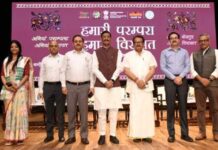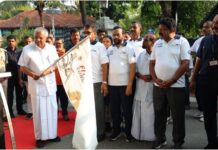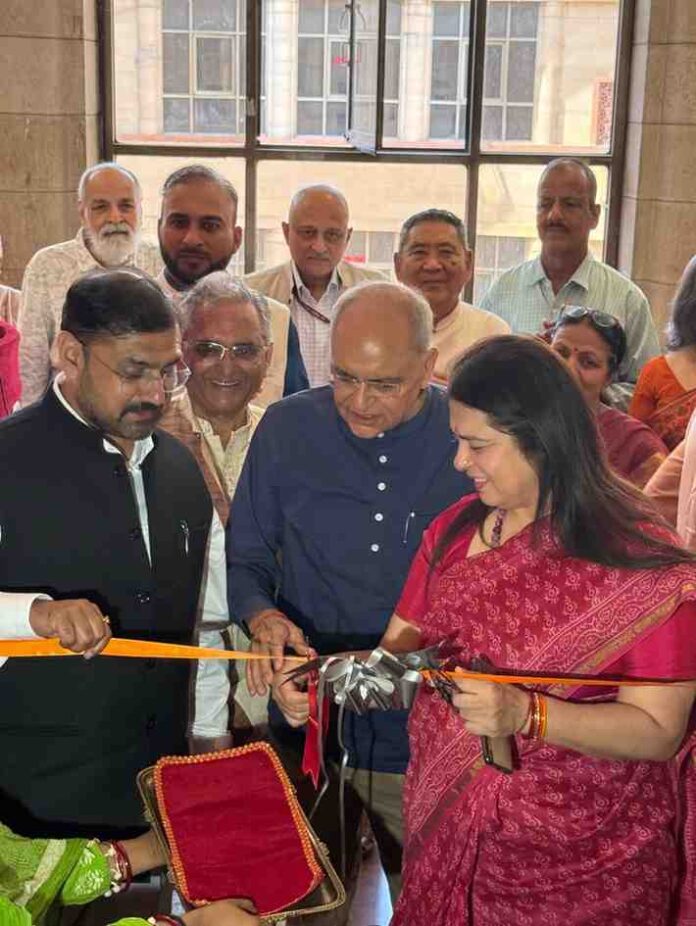APRIL 3: Minister for FCS&CA, Transport, Youth Services and Sports, Information Technology, Science and Technology, ARI and Trainings, Satish Sharma, today inaugurated a 40-day-long photo exhibition on Ambaran, “The Historical Buddhist Citadel,” at Ajanta Hall of the National Museum in New Delhi. The exhibition, a collaborative effort between the National Museum of India and the Centre for Himalayan Asian Studies and Engagement (CHASE), features a collection of photographs captured by veteran photographer Vijay Kranti and his son, Akshat Kranti.
During the inauguration, Minister Satish Sharma emphasized the importance of Ambaran, a significant Buddhist archaeological site located at the bank of the Chenab River in Jammu and Kashmir. The Minister also fondly remembered the efforts of his late father, Madan Lal Sharma, a former Member of Parliament, who played a pivotal role in preserving the site and highlighting its religious and cultural significance to Buddhists worldwide.
Satish Sharma acknowledged that the exhibition serves as a tribute to his father’s dedication to promoting Ambaran and Akhnoor as key destinations in India’s Buddhist tourism. The Minister further explained that the photographs showcased in the exhibition offer a glimpse into the rich history of Ambaran, which is renowned for its terracotta figures, including various Buddha heads, and ornately dressed male and female statues. These artifacts reveal the influences of Graeco-Buddhist and Gandhara schools of art, showcasing the fusion of different cultural and artistic traditions over the centuries.
Speaking about the significance of the exhibition, the Minister highlighted that it is a part of the Jammu and Kashmir government’s broader efforts to promote the state’s cultural heritage and tourism potential. He shared the message of Chief Minister Omar Abdullah, emphasizing that the government is committed to promoting the state’s rich history and cultural assets to the rest of India and the world.
Sharma also detailed the unique cultural and historical features of Akhnoor, which include not only the Ambaran Buddhist Monastic site but also the Akhnoor Fort, Jia Pota Ghat, and the picturesque Chenab River. He stressed that these remarkable landmarks, coupled with the area’s peaceful ambiance, make Akhnoor a must-visit destination for tourists. He assured that the government is committed to placing Akhnoor firmly on the national tourism map.
In closing, the Minister announced that similar photo exhibitions would be held in Jammu and Srinagar after the New Delhi event concludes. He concluded by stating that the exhibition is a photographic tribute to India’s archaeologists and the people of Akhnoor for their role in preserving the country’s rich cultural heritage.
Ambaran, one of the most recent discoveries by the Archaeological Survey of India, is the oldest Buddhist site found so far in Jammu, Kashmir, and Ladakh. The Dalai Lama, the highest spiritual leader of Tibetan Buddhism, had visited the site in November 2012, further highlighting its global significance.




















